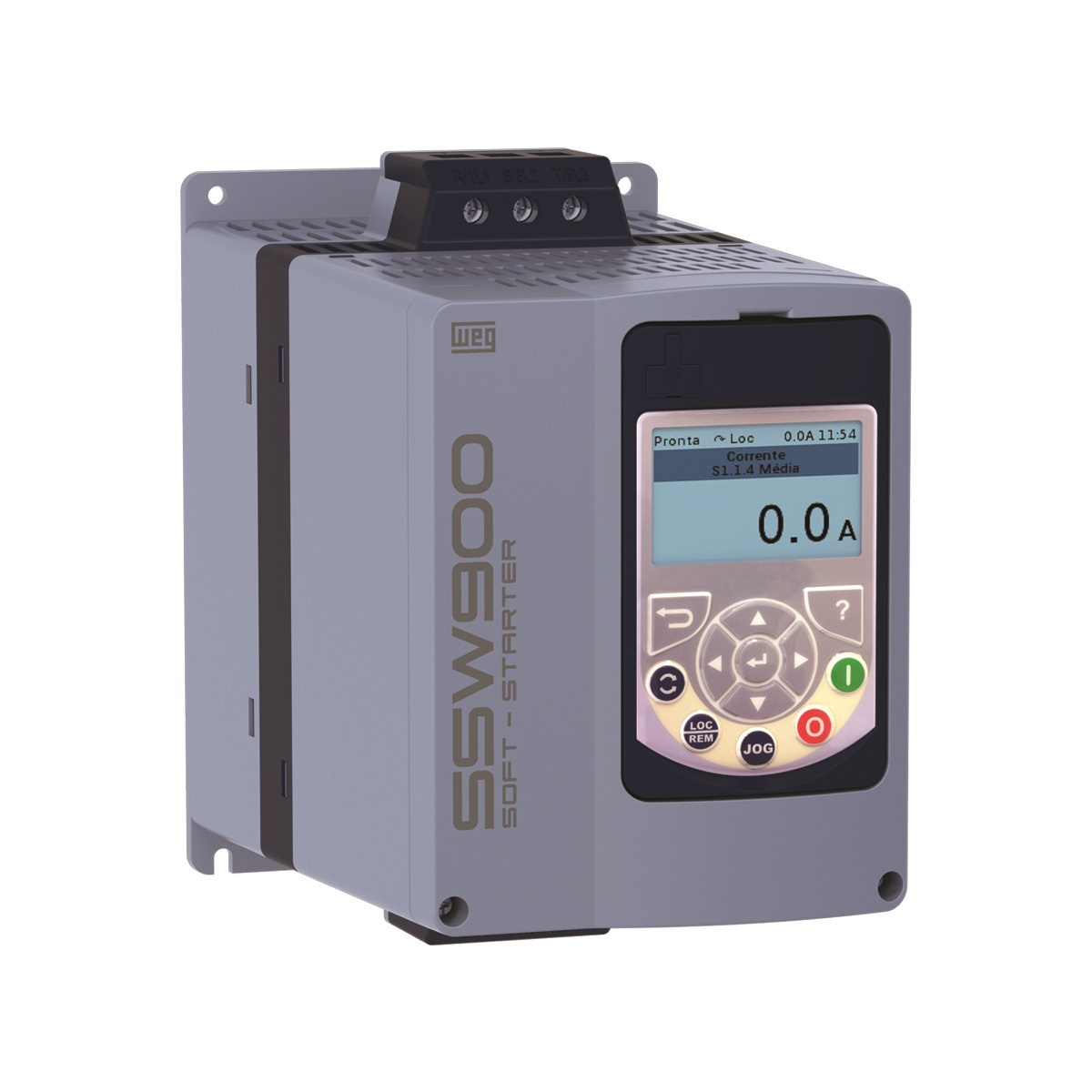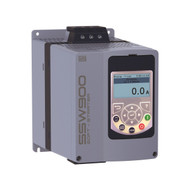Everything You Need to Know About Soft Starters

Soft starters are an important component in many industrial systems, playing a crucial role in controlling the speed and torque of electric motors. By gradually ramping up the voltage supplied to the motor, soft starters help reduce the stress on mechanical parts, minimize electrical stress, and reduce the risk of electrical damage. In this article, we'll take a closer look and answer the question of what is a soft starter for a motor and how it works, as well as explore its benefits and provide an in-depth comparison between soft starters and other motor starting methods.
Soft Starter Uses and Applications
Electrical soft starters are designed to control the speed and torque of electric AC motors during the starting and stopping process, helping to extend the motor's life and improve system reliability. By gradually ramping up the voltage to the power supply, the motor can start smoothly and reduce stress on mechanical components, such as gears and bearings. This gradual increase continues until the rated speed is reached, at which point the soft starter resumes full voltage supply. The same process occurs during motor stoppage, as the supply voltage is gradually reduced for smooth deceleration until the speed reaches zero, at which point the input voltage supply to the motor is broken.
So, what is the working principle of a soft starter? A thyristor is the main component responsible for controlling the voltage. When a gate pulse is applied, it begins to conduct the current flow in one direction, also known as the firing pulse. The firing pulse angle determines how much input voltage cycle is allowed through, and can vary between zero degrees to 180 degrees.
Curious about when to use soft starters? There are a variety of applications in which they are used, including:
- Pump applications
- Conveyer belts
- Fans and similar belt-drive systems
- Crushers and Mixers
- On a bypass system to allow for redundancy
How Does a Soft Starter Work?
Soft starters work by controlling the voltage supplied to the motor, gradually ramping it up from a low level to the full operating voltage. Essentially, as the name implies, it allows the motor to begin running with a soft start. Most motor-driven applications rely on these devices to prevent damage and stress to the machine. The voltage increase is done in steps that depend on the application, and although the voltage increases at a slow rate, the motor is still capable of running at full speed, just at differing intervals, thanks to the thyristors or pattern of solid-state switches.
Can a Soft Starter Damage the Motor?
By design, a soft starter is put in place to protect the motor, so the part in itself will not cause any damage. This does not mean that they do not come without some disadvantages. There is no speed regulation as it only allows for the control of the input voltage supply. A soft starter will typically also require a heat sink to cool the power switches as it does dissipate some energy in the form of heat. The starting torque is significantly reduced, but since soft starters are used for low- or medium-starting torque applications, this does not usually pose an issue.
Types of Soft Starters
Depending on your specific needs, there are various types of soft starters to choose from.
- Primary resistor: Known for their smooth starts, primary resistors offer two-point acceleration, ideal for motors that need limited torque to prevent damage to machinery, such as squirrel cage motors.
- Autotransformer: These utilize taps on the transformer windings with built-in flexibility to control the power input to the motor, making them an excellent choice for when you need to start star or delta-connected, 3-phase induction motors.
- Part-Winding: Ideal for motors that supply moving centrifugal force, like those found in pumps, fans, and blowers. Power is applied to one set of windings that are energized to produce a reduced starting current and torque.
- Wye-Delta: Available as open or closed transition, the Wye-Delta starter can only be used in motors with connection points to each of the three coil windings. They are commonly used in large horsepower and three-phase induction motors.
- Solid state: Often used in industrial applications, HVAC systems, processing equipment, elevators, mining applications, and more, solid-state starters replace mechanical components with electrical ones using silicon-controlled rectifiers, or SCRs.
Pros and Cons of Soft Starters
For the right electric motor application, there are several benefits to using soft starters. From reducing stress on the motor while ensuring full speed is attainable to reducing energy consumption and improving system efficiency, soft starters are an almost necessary addition in certain applications.
Benefits of Using a Soft Starter
- Reduced Stress on Motors: One of the primary benefits of using a soft starter is how they reduce stress on the motor. By gradually increasing the voltage, soft starters reduce the mechanical and electrical stress on the motor, extending its lifespan and reducing maintenance requirements.
- Lower Inrush Currents: In addition to reducing stress on motors, soft starters also limit the inrush current, which is the surge of current that occurs at start-up. This surge can cause damage to the electrical system, as well as increase energy consumption. Soft starters are designed to limit the inrush current, providing additional protection for the electrical system.
- Improved Power Factor: The gradual acceleration provided by soft starters also improves the power factor, which is the ratio of active power to apparent power in the electrical system. An improved power factor reduces energy consumption, lowers energy costs, and improves system efficiency.
Potential Downsides of Soft Starters
In general, there are very few disadvantages to using a soft starter, but if compared to a variable frequency drive (VFD), some drawbacks become apparent.
- Inability to Control Speed: Soft starters are great at limiting the current supplied to the motor, but in return, it removes the ability to control the speed. In order to compensate for this, speed control can be performed with a VFD for devices where controlling speed is critical.
- Reduced Starting Torque: Soft starters are designed to prevent mechanical stress and reduce electrical demand, but this can mean limited torque at startup. For applications that require high starting torque, like heavy loads or high-inertia machinery, this can be a serious drawback. In such cases, a soft starter may not provide the necessary torque boost for efficient motor operation.
- Issues with Heat Dissipation: Soft starters, particularly those based on semiconductor devices like thyristors, generate heat during operation, which needs to be dissipated effectively to prevent overheating and potential damage to the components. In applications where ambient temperature or enclosure design may hinder heat dissipation, this can result in reliability issues and reduced lifespan of the soft starter. Proper cooling and thermal management are crucial in mitigating this drawback.
Choosing the Right Soft Starter
When choosing a soft starter, there are several factors to consider. The application and type of motor, the size of the motor, the voltage and current requirements, and any specific application requirements will need to be known to choose the right motor soft starter. We size Soft Starters by Normal Duty (ND) and Heavy Duty (HD) to allow an amount of current based on the application needs in a given time. Pumps and Fans are considered ND applications, where crushers are HD, and upsizing the Soft Starter is key to increased design life. Another important factor is the number of starts per hour. If your application requires a high number of starts per hour, then it is important to size the unit for a higher ampacity to allow for the heat dissipation that comes from starting several times quickly.
Type of Motor
The type of motor is an important factor when choosing a soft starter. Different types of motors, such as induction motors or permanent magnet motors, have different start-up characteristics and may require different soft starter configurations.
Size of the Motor
The size of the motor is another important factor when choosing a soft starter. Larger motors require more current at startup and therefore may require a larger soft starter.
Voltage and Current Requirements
The voltage and current requirements of the motor are also important factors when choosing a soft starter. The soft starter must be capable of handling the voltage and current requirements of the motor, as well as any specific requirements for the application.
Application Requirements
Any specific requirements for the application must also be considered when choosing a soft starter. This may include requirements for over-current protection, under-voltage protection, or thermal protection. Also, the number of starts per hour could play an important role in selecting the right soft starter, as well as knowing if you are selecting a 3-phase controlled device versus a 2-phase controlled soft starter. Inrush currents are different for each, so be sure to know what duty type and duty cycle you require. Last but not least would be the ambient temperature and normal derate for higher ambient temperature locations.
Comparison with Other Motor Starting Methods
Soft starters are often compared to other motor starting methods, such as direct-on-line (DOL) starting, star-delta starting, and variable frequency drives (VFDs). Each method has its own benefits and drawbacks, but soft starters offer several advantages over these other methods:
- Soft starters provide smooth and controlled starting, reducing the stress on mechanical components and minimizing electrical stress.
- Soft starters offer adjustable overload protection, reducing the risk of electrical damage and improving system reliability.
- Soft starters are more energy efficient than DOL starting, as they reduce the starting current required by the motor.
- Soft starters are more cost-effective than VFDs for smaller motors, as VFDs are typically more expensive and require more complex installation.
Choosing a Soft Starter Manufacturer for Your Needs
When shopping for mechanical soft starters, there are several manufacturers to choose from. At Wistex, we primarily carry Eaton, ABB, Toshiba, and Weg soft starters, available in various amperages and voltages to fit your needs.
Eaton Soft Starters
When choosing Eaton, there are various frame size options, including the S811+N37N3S, S801+T24N3S, S801+ line, S811+ line, and more. Reduced voltage starters from Eaton are compact, multi-functional, easy to install, and easy to program. They're designed specifically to control the acceleration and deceleration of three-phase motors.
ABB Soft Starters
ABB soft starters offer many built-in motor protection features, ensuring it's safe and reliable. These products are easy to learn and set up, with a built-in bypass that saves energy and space while reducing heat generation. Units from ABB also offer features that enable processes to operate at their full potential, including torque control, pump cleaning, motor brake, and more.
WEG Soft Starters
With Weg, you'll find the GPH2, SSW, and TPH series soft starters. No matter which you choose or what you need, you'll be pleased with the quality and increased efficiency it provides for your electrical motor.
Quality Service, Refurbishing, and Repair Experts
Looking for specific product information? We have all of the resources and information you need regarding product specifications so you can perform accurate research for your motor needs and performance recommendations. Contact our Service and Support team for more information.
Purchase a Quality Soft Starter to Fit Your Needs
It's obvious the crucial role a soft starter plays in controlling the speed and torque of electric motors. Their benefits greatly outweigh those of other motor starting methods thanks to its ability to reduce stress on mechanical components, minimize electrical stress, and improve system reliability. Installing a soft starter to manage the supply voltage to gradually increase the motor speed will help extend the life of your motor and improve overall system performance. Shop our soft starter products from Wistex today, or contact us for more information.
